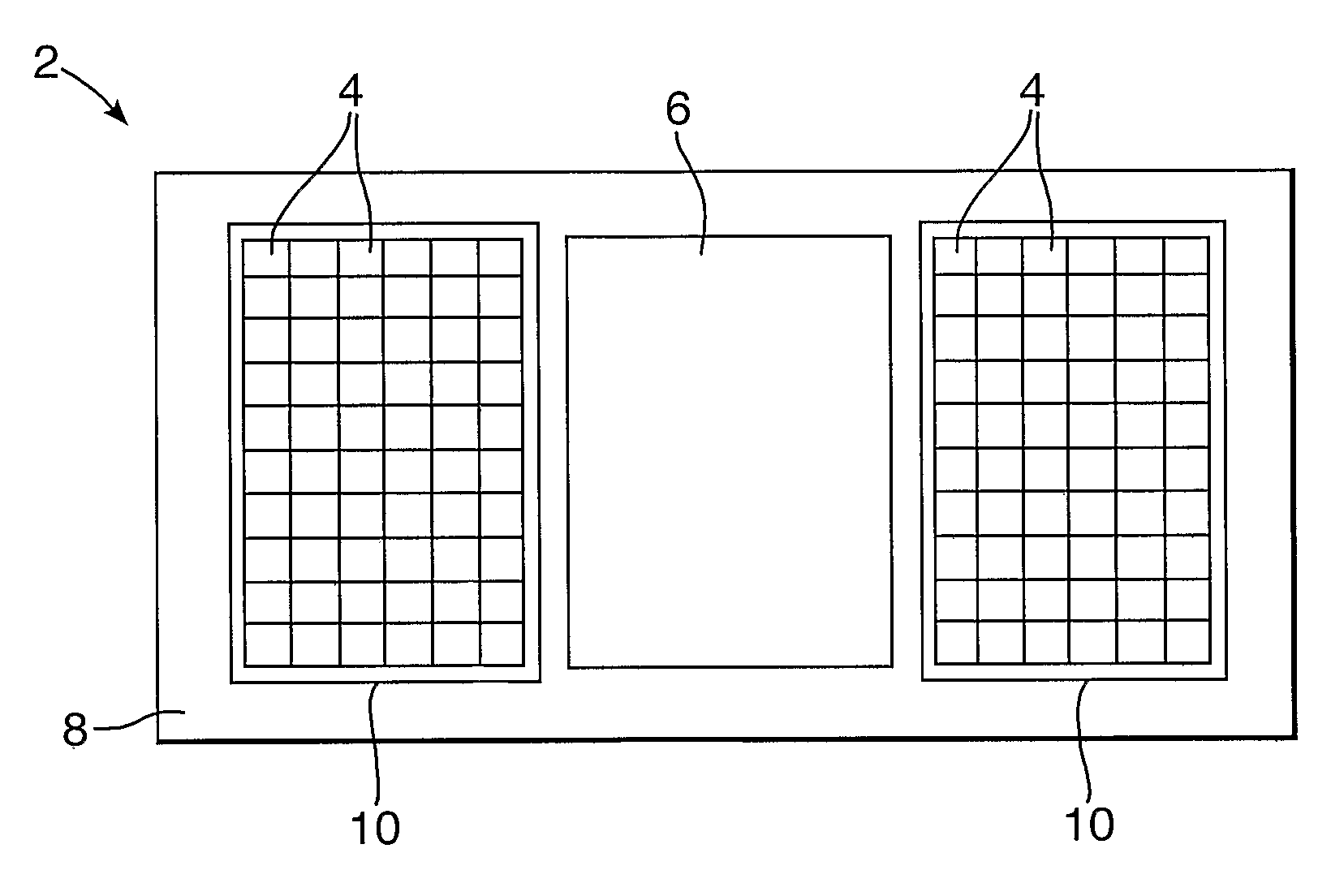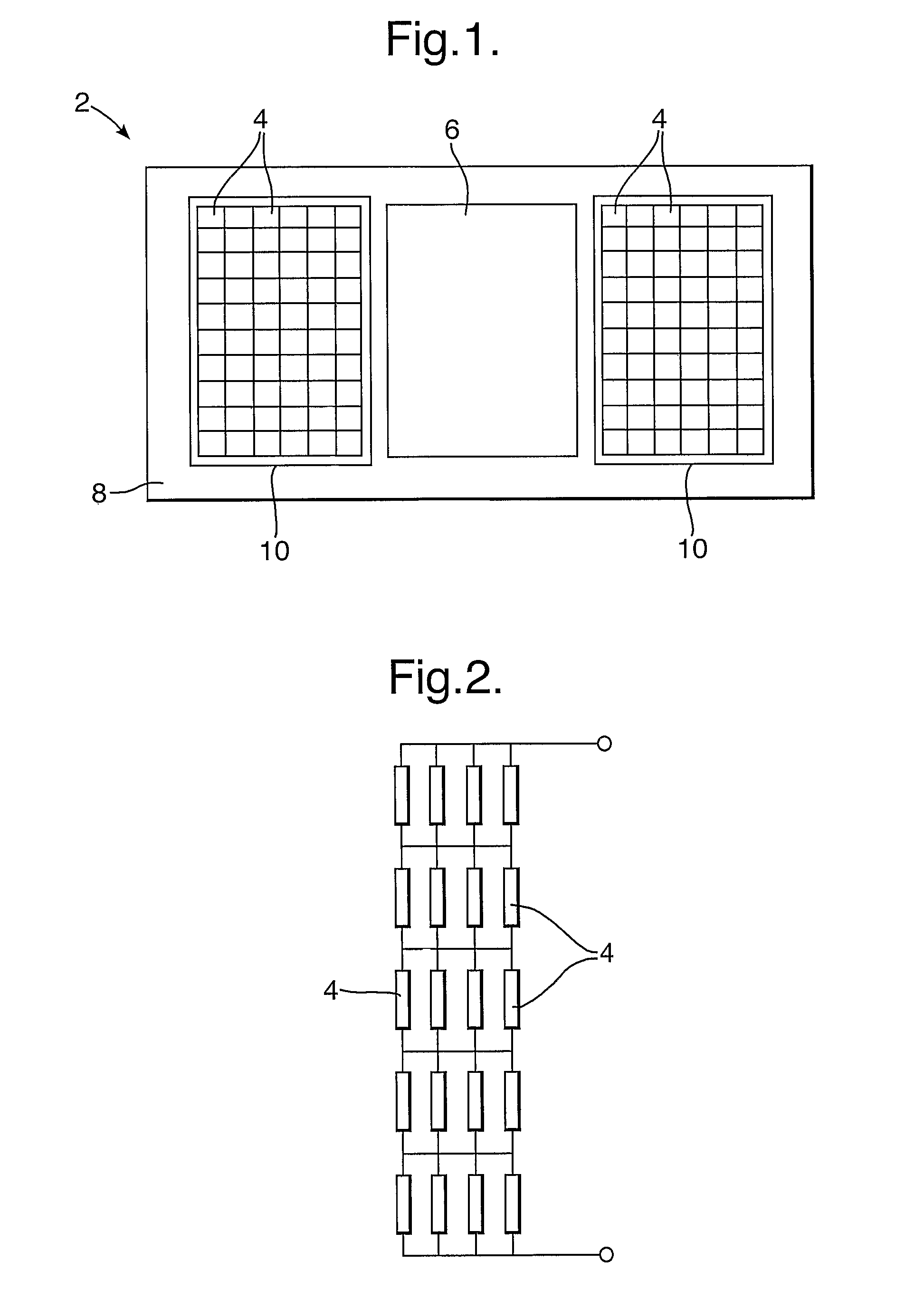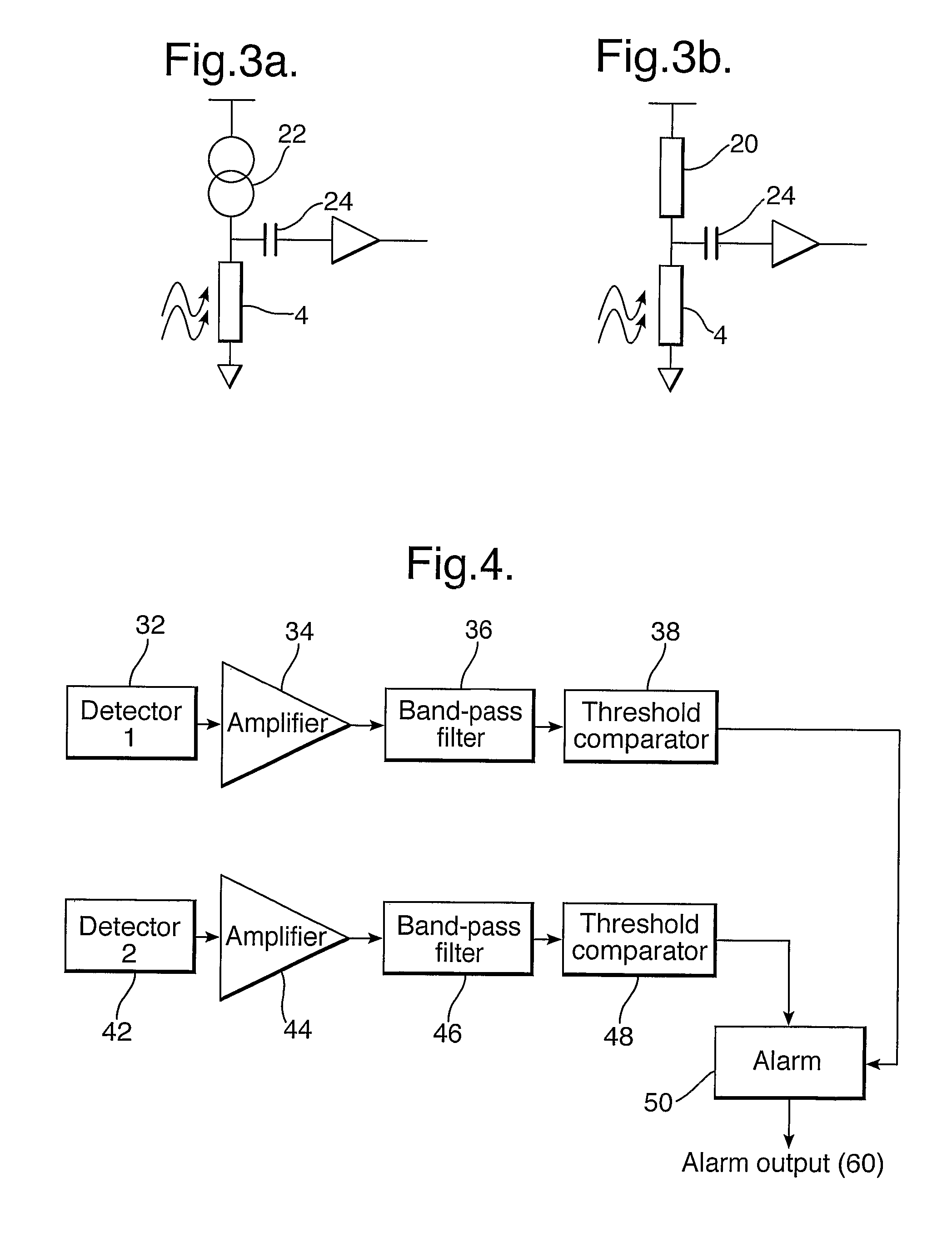Infrared detector
a detector and infrared technology, applied in the field of infrared detectors, can solve the problems of relatively high technology required to fabricate and maintain a vacuum environment for conventional bolometer detectors, and achieve the effects of reducing manufacturing costs over discrete components, facilitating fabrication, and reducing the cost of pir detection modules
- Summary
- Abstract
- Description
- Claims
- Application Information
AI Technical Summary
Benefits of technology
Problems solved by technology
Method used
Image
Examples
Embodiment Construction
[0060]Conventional bolometer detectors are not considered as a credible alternative to conventional PZT PIR detectors on grounds of disparate technical performance and high cost. One of the main cost drivers is the packaging technology required to provide an evacuated, hermetically sealed enclosure around the bolometer detector(s). In the present infrared detector, the bolometer detectors are operated in an environment (e.g. air) at substantially atmospheric pressure, thereby eliminating the expensive vacuum packaging. Conduction of thermal energy away from a bolometer detector is higher in air than in a vacuum, resulting in reduced sensitivity of the infrared detector. However, in the present invention, the reduction in sensitivity is at least partly compensated by combining a plurality of bolometer detectors together in a network and / or operating the bolometer detectors at a high bias power / current.
[0061]Referring now to a first embodiment of the invention, FIG. 1 shows an infrare...
PUM
 Login to View More
Login to View More Abstract
Description
Claims
Application Information
 Login to View More
Login to View More - R&D
- Intellectual Property
- Life Sciences
- Materials
- Tech Scout
- Unparalleled Data Quality
- Higher Quality Content
- 60% Fewer Hallucinations
Browse by: Latest US Patents, China's latest patents, Technical Efficacy Thesaurus, Application Domain, Technology Topic, Popular Technical Reports.
© 2025 PatSnap. All rights reserved.Legal|Privacy policy|Modern Slavery Act Transparency Statement|Sitemap|About US| Contact US: help@patsnap.com



